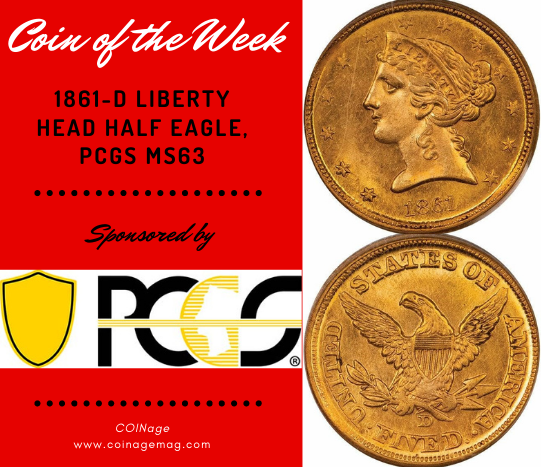
The Dahlonega Mint in Georgia is one of three United States Mint facilities in the South that were overtaken by Confederate rebels in 1861 during the opening rounds of the Civil War. After the Confederates occupied the mints, coin production at these locations ended once available bullion supplies were exhausted. Such was the case at the D-mint in northern Georgia.
The Dahlonega Mint, which opened in 1838 to help convert gold ore from nearby mines into coins, had never struck particularly large quantities of gold coinage — certainly not at the levels regularly achieved by the Philadelphia, New Orleans, and San Francisco Mints. However, the Dahlonega Mint provided ample supplies of gold coins for the South at that time.
Today D-mint gold coinage is considered rare. The rarest of the $5 gold half eagles is believed to be the 1861-D, which was among the last coins ever produced at the Dahlonega Mint. Only 1,597 half eagles were struck there that year. Gold coin experts suggest only 75 specimens survive, and just nine in uncirculated grades.
An example of the 1861-D half eagle considered to be the finest known crossed the block at The Regency Auction 42, a landmark event held by Legend Rare Coin Auctions in December 2020. It is where an 1861-D Liberty Head half eagle graded MS63 by Professional Coin Grading Service realized an outstanding $282,000 — well above the pre-sale estimate of $220,000 to $250,000. The specimen, once belonging to the cabinets of John Clapp and Louis Eliasberg, survives today as a rare relic from one of the nation’s bloodiest, darkest chapters.
*Coin images are courtesy of Legend Rare Coin Auctions.















